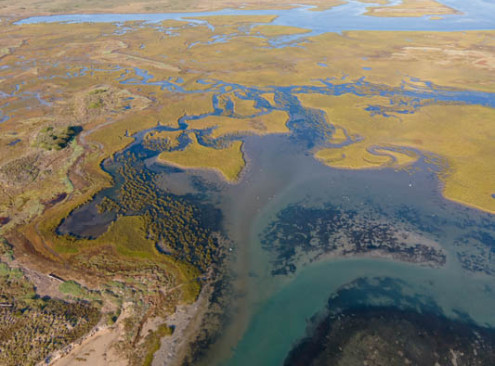© Pint of Science, 2025. All rights reserved.
Explore the power of deep-ocean sediment avalanches and how they can travel over a thousand kilometers, disrupting communication cables and pipelines. Then, discover how saltmarsh restoration in the Humber Estuary is helping to store carbon and combat climate change, with a focus on nature-based solutions and the role of both blue and green carbon.
Monitoring deep-ocean avalanches of sediment that flow over a thousand kilometers
Steve Simmons
(Lecturer)
Episodic avalanches of sediment, called turbidity currents, sculpt channels and deep canyons on the seafloor. The avalanches are triggered when sediment accumulates and becomes unstable. The flows themselves are highly energetic and are capable of breaking communication cables and oil pipelines. I will describe how we monitor these flows and how one such flow ran out for over a thousand kilometers, breaking two communication cables that affected internet connectivity across southern Africa.

Carbon Storage of Humber Estuary Restored Saltmarshes (Working Title)
Charlie Trotman
(PhD Researcher)
Saltmarshes are being increasingly recognised as important in storing marine (blue) carbon. Due to historical losses of saltmarsh in the Humber Estuary, there have been a number of saltmarsh restoration projects using nature-based solutions and rewilding. This study focuses on both blue and green carbon in the sediments of three sites on the Humber Estuary; managed realignment sites, in different stages of development, and one naturally formed saltmarsh.

Map data © OpenStreetMap contributors.
Other Calla events
2025-05-20
AI and Us: Breaking Bias, Unlocking Potential, and Finding Our Place
Calla
53 Whitefriargate, Hull, HU1 2HP, United Kingdom


